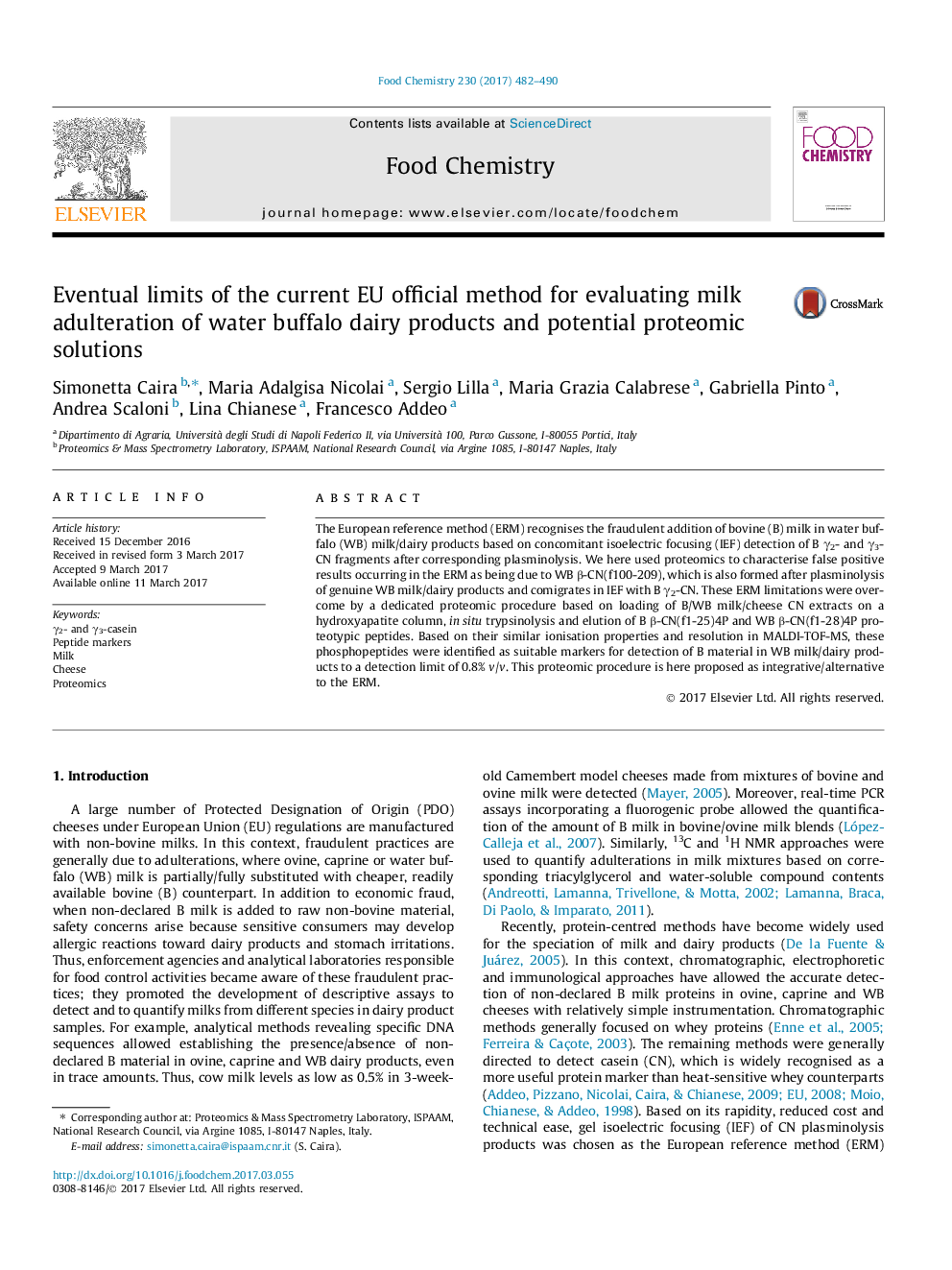| Article ID | Journal | Published Year | Pages | File Type |
|---|---|---|---|---|
| 5133218 | Food Chemistry | 2017 | 9 Pages |
â¢Proteomics showed limits of the EU reference method assaying bovine in water buffalo milk.â¢Water buffalo β-CN (f100-207) in plasminolysate generates false-positive results.â¢Bovine β-CN (f1-25)4P and water buffalo β-CN (f1-28)4P as novel fraud markers.â¢Dedicated MALDI-TOF-MS analysis as a second-generation reference method.
The European reference method (ERM) recognises the fraudulent addition of bovine (B) milk in water buffalo (WB) milk/dairy products based on concomitant isoelectric focusing (IEF) detection of B γ2- and γ3-CN fragments after corresponding plasminolysis. We here used proteomics to characterise false positive results occurring in the ERM as being due to WB β-CN(f100-209), which is also formed after plasminolysis of genuine WB milk/dairy products and comigrates in IEF with B γ2-CN. These ERM limitations were overcome by a dedicated proteomic procedure based on loading of B/WB milk/cheese CN extracts on a hydroxyapatite column, in situ trypsinolysis and elution of B β-CN(f1-25)4P and WB β-CN(f1-28)4P proteotypic peptides. Based on their similar ionisation properties and resolution in MALDI-TOF-MS, these phosphopeptides were identified as suitable markers for detection of B material in WB milk/dairy products to a detection limit of 0.8% v/v. This proteomic procedure is here proposed as integrative/alternative to the ERM.
